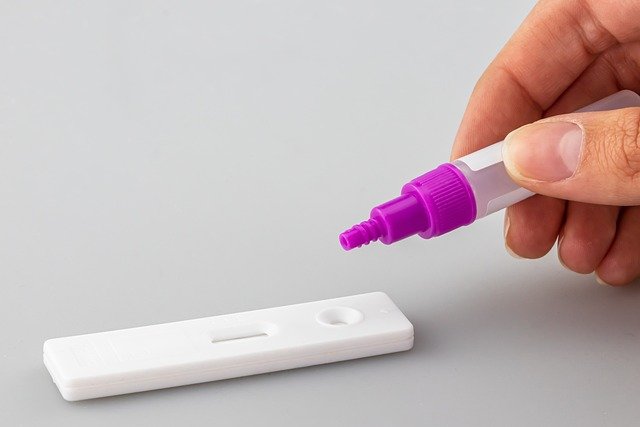Understanding Sperm Clinics: Functions, Processes, and Ethical Standards
Sperm clinics play a vital role in reproductive healthcare, serving as specialized facilities where men can donate sperm for fertility treatments. These clinics maintain rigorous medical standards while balancing complex ethical considerations around donor privacy and recipient needs. Understanding how these facilities operate provides insight into an important yet often misunderstood aspect of assisted reproductive technology.

Sperm donation facilities are specialized medical centers that collect, analyze, store, and distribute donor sperm for assisted reproductive procedures. These clinics serve as crucial links between donors and recipients, helping thousands of individuals and couples achieve their dreams of parenthood each year. The operation of these facilities involves careful attention to medical protocols, legal requirements, and ethical considerations to ensure the health and wellbeing of all parties involved in the reproductive process.
What Is a Sperm Clinic and What Functions Does It Serve?
A sperm clinic, also known as a sperm bank or cryobank, is a specialized medical facility that collects, tests, processes, and stores sperm donations for future use in assisted reproductive procedures. These facilities serve multiple important functions in reproductive healthcare. They provide sperm for individuals or couples facing male factor infertility, single women seeking pregnancy, same-sex female couples, and those with genetic concerns that may be passed to offspring.
Beyond simply collecting donations, sperm clinics serve as comprehensive reproductive resource centers. They maintain extensive genetic and medical screening programs, provide counseling services, and ensure proper handling and storage of biological materials. Many clinics also offer educational resources about fertility options and maintain detailed donor databases that help recipients make informed choices while respecting donor privacy preferences.
How Does the Sample Collection and Medical Testing Process Work?
The process of sperm donation begins with careful screening of potential donors. Once accepted into a donation program, donors visit the clinic to provide samples in private collection rooms specifically designed for this purpose. These rooms typically offer materials to assist with the collection process and ensure donors can provide samples in a comfortable, private environment.
After collection, samples undergo immediate laboratory analysis to assess sperm count, motility (movement), morphology (shape), and overall quality. Only samples meeting strict quality thresholds proceed to the next stage. Comprehensive medical testing follows, including screening for infectious diseases such as HIV, hepatitis B and C, syphilis, and other sexually transmitted infections. Genetic testing is also conducted to identify potential hereditary conditions. This multi-layered testing process typically occurs over several months, with samples quarantined during this period to ensure safety before release for use in fertility treatments.
What Confidentiality and Ethical Standards Do Sperm Clinics Follow?
Confidentiality represents one of the cornerstone principles of sperm clinic operations. Clinics implement robust systems to protect donor and recipient privacy, with information stored in secure databases with restricted access. Many clinics offer tiered anonymity options, allowing donors to choose between complete anonymity, identity disclosure when offspring reach adulthood, or known donation arrangements where identity is shared from the beginning.
Ethical standards in sperm clinics address numerous complex considerations. These include limiting the number of pregnancies per donor to prevent consanguinity concerns (biological relatives unknowingly meeting and forming relationships), ensuring informed consent from all parties, providing non-directive counseling to support decision-making, and maintaining equitable access to services. Most reputable clinics adhere to guidelines established by professional organizations like the American Society for Reproductive Medicine or equivalent international bodies, which provide frameworks for addressing these ethical challenges.
What Are the Consultation and Evaluation Steps for Potential Donors?
The journey to becoming a sperm donor involves multiple evaluation steps designed to ensure donor health and suitability. Initial screening typically begins with an online application collecting basic demographic information, medical history, and family background. Candidates meeting preliminary criteria are invited for in-person consultations where clinic staff explain the donation process, commitments involved, and legal implications.
Comprehensive evaluation follows, including detailed medical history review, physical examination, psychological assessment, and genetic counseling. Clinics evaluate factors including age (typically 18-39), health status, family medical history, educational background, and psychological readiness. Many clinics also assess donor motivation to ensure individuals understand the long-term implications of donation. This thorough evaluation process means that typically only about 5-10% of applicants ultimately qualify as donors, maintaining high standards for donation programs.
How Do Sperm Clinics Handle Storage and Preservation Methods?
Proper storage and handling of sperm samples represents a critical technical aspect of clinic operations. After successful collection and testing, samples undergo a careful preparation process called cryopreservation. This involves mixing sperm with special protective solutions called cryoprotectants that prevent cell damage during freezing. The samples are then carefully cooled and ultimately stored in liquid nitrogen at temperatures around -196°C (-320°F).
Modern storage facilities maintain samples in specialized containers called cryotanks, which are continuously monitored through automated systems that track temperature, liquid nitrogen levels, and other critical parameters. Properly cryopreserved samples can remain viable for decades, with some clinics maintaining samples for 25+ years. Clinics implement comprehensive tracking systems to maintain chain of custody for each sample, with barcoding and electronic records ensuring accurate identification throughout storage and eventual use. These sophisticated preservation methods ensure that recipients receive high-quality samples regardless of when donation occurred.
This article is for informational purposes only and should not be considered medical advice. Please consult a qualified healthcare professional for personalized guidance and treatment.




